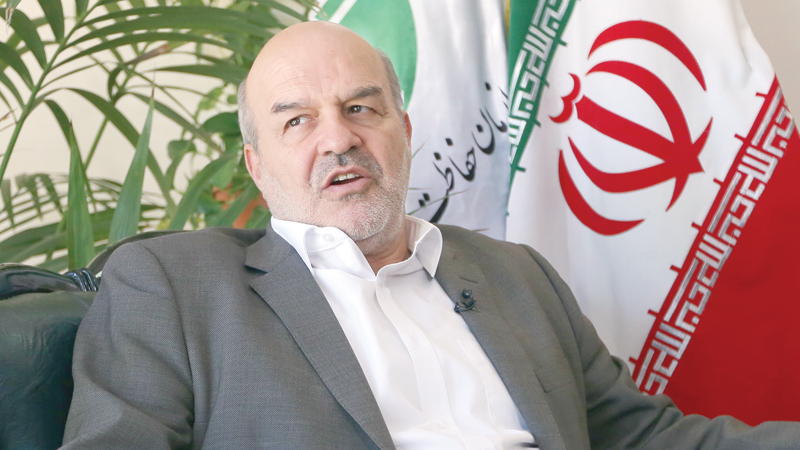

TEHRAN: Iran faces losing 70 per cent of its farmlands if urgent action is not taken to overcome a litany of climate woes, the country’s environment chief Isa Kalantari said.
The Islamic Republic is grappling not only with air, water and soil pollution, as well as drought and desertification, but also with the effect of years of crippling US and international sanctions.
Adding to the dire situation, “we currently use about 100 per cent of our renewable water... according to global standards this figure should not be higher than 40 per cent,” said Kalantari, vice-president and head of Iran’s Environment Department, in an exclusive interview in Tehran.
“The excessive consumption of water, especially from groundwater is a threat and could have terrible social consequences,” he warned.
If the situation is not brought under control, then “we would lose about 70 per cent of our cultivated land in a maximum of 20 to 30 years.”
“The south of Alborz and east of Zagros, if we don’t take swift action, will become unusable for agriculture,” Kalantari added.
Alborz and Zagros are mountain ranges in the north and west of Iran respectively. The majority of Iran’s mostly arid land mass and population centres are located to the south and east of them.
According to the UN’s Food and Agriculture Organization, Iran, a country of some 80 million people, predominantly relies on agriculture.
Kalantari said there had been many years of mismanagement of water resources, and mistaken decisions forced by political and economic concerns such as the US sanctions and climate change.
“We basically thought that environment was not that important,” he said.
Other countries had also failed to address climate issues introducing policy errors in the 1960s and 1970s.
“We made these mistakes in the 1980s. Then we came to realise that in places that we’d built dams, we shouldn’t have built any, and in places where we should have built dams, we didn’t build any,” he said.
The pressure on the country’s resources has also been exacerbated by population growth, with Iranians encouraged to have large families in the years following its 1979 Islamic revolution.
“In the first decade after the revolution, we encountered a high population growth rate, more than three per cent annually,” Kalantari said. This policy was taken “without paying attention to utilising and improving” the use of resources, he said.
He also highlighted the effects of the Iran-Iraq war (1980-1988), when the country was isolated and could not concern itself with sustainable development as it had a burgeoning population to feed.
“Iran could not, and cannot, bear the pressure that this (population growth) exerted on the consumption of water, for the supply of food and for agriculture,” he added.
— AFP
Oman Observer is now on the WhatsApp channel. Click here



